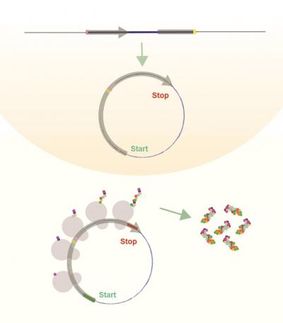Modifying stem cells shows initial promise in battle against muscular dystrophy
Advertisement
A group of University of Florida Health researchers has found a way to reverse the effects of one type of muscular dystrophy by editing the genome of nervous system stem cells. The findings are an early but important step toward the eventual goal of using stem cell therapy to treat myotonic dystrophy type 1, said Guangbing Xia, M.D., Ph.D., an assistant professor in the UF College of Medicine department of neurology. Researchers have yet to test the process in an animal model.
Myotonic dystrophy type 1 causes muscles in the face, neck, and lower arms and legs to get weak and shrink. Muscles that drive the heart and control breathing can weaken as the disease progresses. The two types of myotonic dystrophy affect 1 of every 8,000 people worldwide and there are no treatments to slow the diseases’ progression, according to the National Institutes of Health. The UF team used genome editing to repair the coding errors in human cells that cause myotonic dystrophy type 1, according to findings published recently in the journal Stem Cells.
During gene editing, researchers inserted a signal to truncate the RNA in the gene in adult stem cells. That blocked the abnormally long, repetitive stretches of RNA that cause myotonic dystrophy type 1. The gene editing reversed the abnormalities found in cells affected by myotonic dystrophy, said Xia, lead author of the paper.
“We know the gene that’s involved and we know what’s going on with it. If you can block the expression of the mutation then that’s the cure,” he said.
While much work remains for researchers before the therapy could be considered for testing in people, these findings are a first step that shows the DM1 genetic mutation can be altered to block the effects of mutation in cultured cells, said Laura Ranum, Ph.D., director of the College of Medicine’s Center for NeuroGenetics, a professor in the department of molecular genetics and microbiology and a co-author of the paper.
If additional studies are successful, this ability to genetically modify stem cells could someday lead to cell transfer therapy as a treatment for myotonic dystrophy type 1 and other neurological and neuromuscular disorders that develop in similar ways, Xia said.






















































